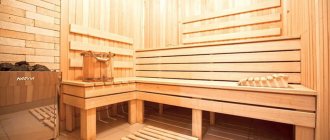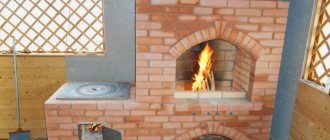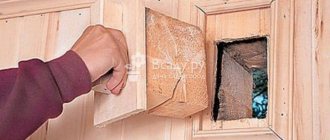A fire is not a pleasant situation. In addition to causing damage to your property and spending money on restoring repairs and buying new furniture, you will also have to thoroughly clean the room and remove traces and the smell of burning. To make this procedure easier, it is worth getting acquainted with the stages and specifics of cleaning after a fire.
To effectively remove burning from furniture and other objects after a fire, use only a suitable product. To achieve high-quality cleaning results, you need to follow consistent instructions, since each surface is cleaned of soot and soot differently.
Stages of apartment processing
To avoid more contamination of things and furniture, clean the room in stages. This will not only prevent additional damage, but also more comfortably get rid of burning and soot.
We take things out
Before cleaning after a fire, immediately clear the room of furniture and belongings. If the weather is good, take everything outside. It doesn’t matter what exactly was damaged by the fire - furniture, decorative items or household appliances, after the fire all things will smell like burning, so they must be taken out into the air and thoroughly ventilated.
We remove curtains, clean drywall, carpets, baseboards
Fabrics and wool absorb odor best, so you need to get rid of them first. Remove all window textiles and wash several times.
The smell of burning and soot is well absorbed into wallpaper, baseboards and drywall, so it is better to immediately dismantle these elements from the room affected by the fire.
Getting rid of garbage
After a fire, many things turn into garbage, which also needs to be thrown away. When removing linoleum and other materials, small debris will appear. Get rid of anything that will interfere with cleaning the room. Also remember to remove paint and wallpaper from walls and ceilings.
Dry cleaning
Use a vacuum cleaner or broom to remove dust and soot from the floor, walls and ceiling. Never use wet rags, otherwise you will simply smear dirt across the surface. The best option would be to use a vacuum cleaner with a nozzle with a tapered spout.
Cleaning the ceiling and walls
After a fire, clumps of soot hang from the ceilings. If they are removed with a rag or mop, they can leave stains on the surface that will be very difficult to remove in the future. Take a vacuum cleaner and carefully remove any dirt that has accumulated on top. Alternatively, you can use a spatula or scraper.
How to remove odor
First, open all windows and doors to allow toxic fumes and gases to escape. Then carefully examine all areas of the room that were affected by the fire. Wipe windows, glass, hatches and doors, since even a small amount of soot can spoil the air in the entire apartment.
There are many ways you can remove the burning smell from a room after a fire. You can purchase a special product in the store or use a folk recipe. A humidifier or air purifier will also be an effective assistant. If the device works around the clock, the unpleasant aroma will disappear in a few days.
In everyday life, people use various solutions consisting of vinegar, alcohol, soap or cinnamon.
Cleaning the walls in the bathhouse
Most often, those objects where there is a constant thermal load are exposed to soot and soot. It is not so easy to wash them off. You can remove soot from wood using one of the following methods:
- Mechanical. Wood perfectly absorbs odors, so in order to completely remove soot or soot, you need to completely scrape it off with any hard object or sanding machine.
- Another way to remove soot from walls is to create a cleansing scrub designed for treating wooden surfaces. It may be based on sand or crushed brick. It should be mixed with a small amount of water, and the resulting slurry should be used to clean the damaged surfaces.
- Another way to wash soot in a bathhouse is to use ready-made products. It is necessary to purchase only those household chemicals that are suitable for treating the internal surfaces of baths. Most often, they contain alkaline substances. They are not absorbed into wood and will begin to affect the human respiratory system when heated.
Getting rid of soot can be difficult. In addition, during the cleaning process you can damage the walls, floor or ceiling, and it will be almost impossible to get rid of the resulting defects. Do not allow soot to appear. To do this, you need to wipe the surfaces with soap and water after each visit to the bathhouse or sauna.
Necessary equipment
In addition to protective equipment, you will need the following items to clean your house after a fire:
- vacuum cleaner;
- broom and dustpan;
- hard brushes;
- garbage bags and sacks;
- sealant;
- wet rags;
- roller, spray or brush;
- scraper or spatula.
Prepare the necessary equipment in advance so as not to be distracted from work later.
Security measures
When cleaning an apartment after a fire, you need to follow some rules. Rules during cleaning, by following which you can prevent the occurrence of dangerous situations:
- The room should be well ventilated. This is due to the fact that when cleaning soot from the ceiling and walls, a large number of soot particles float in the air. Ventilation relieves various diseases of the respiratory tract and lungs.
- The body must be protected with clothing. This should include long sleeves, pants and closed shoes.
- Air humidity should be increased. This can be achieved using a humidifier or hanging wet rags (towels).
- The face is protected with goggles and a protective mask, hands with gloves.
When getting rid of soot that appears after a fire, you need to use chemicals or traditional methods. In addition, you can use the services of a cleaning service.
Remedies for burning and soot
To remove soot and soot stains, you can use special chemicals or make a solution yourself.
Chemicals
Domestos does a good job of cleaning soot. This product will not only effectively clean your apartment of soot, but will also disinfect it, also removing unpleasant odors. It is not recommended to use budget products, since they can only harm the surface by absorbing fumes into it.
Substances at hand
You can use various materials at hand for cleaning:
- The room can be cleaned with soapy water. This folk remedy effectively removes stains and eliminates odors. Just dissolve soap in water at the rate of 1 tbsp. spoon of the substance per 1 liter of liquid, and process.
- Dishwashing detergent does a good job of removing soot marks. Pour 5-7 liters of warm water into a bucket and add 1 tbsp. spoon of the substance, stir thoroughly until foam forms and treat all surfaces that need cleaning with the solution.
- Use ammonia and vinegar to clean surfaces. Dissolve 2 tbsp. tablespoons of ammonia and the same amount of vinegar in 5 liters of water and treat surfaces contaminated with soot with the solution.
- To remove traces of soot, soak a napkin or gauze in an alcohol solution and wipe the surface of the walls. Refined gasoline can also be used in a similar way.
- Dissolve 1 tbsp. spoon of soda ash in 1 liter of water and treat surfaces smeared with soot and soot several times with the resulting composition.
- To eliminate odor, use a special solution. Please note that the solution recipe contains hydrochloric acid, so protect yourself first. Mix ammonia and soda in equal quantities, and then add the same amount of hydrochloric acid to the mixture. During the reaction, white smoke will be released, which can eliminate the burning smell. Leave the product in the room, close the windows tightly and leave the room for a day. After exposure, the unpleasant odor should disappear.
What to use to clean tiles after installation
You've worked hard laying new tiles, but when you go to admire your work, you notice a haze over the tiles. This grout mist is completely normal, but it can be a pain to remove. The good news is that you probably already have several options for cleaning your tiles after grouting. It's always best to start with the gentlest technique and work your way up to harsher cleaners as needed.
Cause of tile haze
Once the tiles are cemented, remove any excess with a sponge. Sometimes, however, a little grout remains, creating a whitish haze. You may not notice this at first, especially when the tiles are still wet. Once dry, the mist often reveals itself. You have several options for cleaning ceramic tiles after installation to remove grout residue. Usually the best results are achieved if you act quickly.
Dry gauze method
Cloudiness of freshly laid tiles is as easy to remove as wiping it with dry gauze. The sooner you start pouring the grout, the more effective this method will be, but you must allow the grout to dry for at least 24 hours. This method works when the grout is caused by loose or easily removable grout on the surface of the tile. After thinning the grout with a cloth, you can sweep or vacuum the remaining grout to clean the floor or countertop.
Towel dampened with water
If dry gauze doesn't help, try immersing it in clean water and removing the excess. The fabric should be damp, but not wet. Apply a little elbow grease to rub into each tile to remove grout haze. Humidity is sometimes enough to activate or wet the grout on the tile surface so that it flows easily. You can also try a damp sponge for this job.
Diluted vinegar mixture
For smooth porcelain or ceramic tiles, you can use vinegar if there is not enough water. But don't use it on stone, slate or other porous material, as the acidity of the vinegar can damage the tiles. To use vinegar on porcelain or ceramics, mix four parts water to one part white vinegar. Wipe the plates with a soft cloth dampened with the vinegar mixture. If desired, you can add more vinegar to make the mixture stronger. Rinse the plates again with plain water to remove any remaining vinegar.
Commercial solution cloud remover
If you're still dealing with cloudy grout residue, it may be time to switch to a tile cloud remover. Epoxy grouts often require a product designed for that type of grout. Many of them are acidic, but do not combine well with natural stone. Like vinegar, acidic cleaners can remove new plaque. Always select a grout remover that matches the type of tile installed.
When using chemical cleaners, always work in a well-ventilated area. Wearing a mask and gloves can provide additional protection. The remover should be used according to the instructions on the package. Depending on the product, you may need to spray or rub the cleaner onto the tile and then scrub the tile surface with water only to remove the cleaner.
The best method for cleaning newly installed tiles is to apply as little abrasion as possible while still being effective, which can vary depending on the type of flooring and how long the grout remains on the tiles. If necessary, review your options to find a solution that will make your tiles look fresh and modern.
Ready set after a fire
The advantage of such sets is their universal action. In addition to effectively washing away burning and soot, the product quickly removes unpleasant odors and poisons after a fire. However, during the cleaning procedure of the room, you need to close all windows and doors, otherwise the substance will simply disappear.
Many preparations differ in their use: some are diluted to form foam, while others can be used in the form in which you bought them. Therefore, before cleaning the apartment, carefully read the instructions for use and follow the recommendations.
Mechanical cleaning
Can soot be safely removed from ceilings, floors and walls? Of course yes! To do this, you will need a scraper with a sharp base or a regular spatula. Using these items you can dry clean any surface from dirt. True, this will require a lot of free time and physical strength. By the way, the easiest way to prevent serious contamination: to do this, after completing each fire of the sauna stove, you need to take a soft brush, which is intended for wood, and clean the floor and walls of the sauna. Another mechanical method is to use a grinding machine, the flap-type wheel of which has a diameter of up to 12 cm and a grain size of 35 units. Of course, as a result of the work, a large amount of dust will appear, but it can be quickly and easily removed using a clean rag and soap solution.
Professional compounds for removing soot and soot
Not all professional kits are effective against burning and soot after a fire. Let's look at the most popular companies that have established themselves as manufacturers of high-quality products for cleaning apartments from soot and unpleasant odors.
Facade cleaner No. 2
The product effectively copes with fumes on metal, brick and concrete surfaces. The extract is mixed in a proportion of 100-200 ml per 1 liter of water. Apply the mixture to contaminated areas of the façade and rinse off with clean water after 10 minutes. The procedure will require a roller, sprayer or brush.
"Pure Deso"
The substance is intended to remove burning odors after a fire. Mix 2 mg of Chist Dezo with 10 liters of water and apply to the surface. The peculiarity of the drug is the process of removing unpleasant odors. If analogues are distilled by replacing their own smell, then the “Chist Dezo” composition destroys the molecules, as a result of which the burning smell simply disappears.
The drug can also be used to remove stench from upholstered furniture, wood, wallpaper and other interior elements.
Mazbit+
The concentrate is intended for removing soot from the facade areas of the house. The special feature of Mazbit+ is its composition, which copes well with soot. The standard proportions with water are 1/3, but for severe contamination, the dose can be increased to 1/1.
Mazbit+ does not contain explosive elements, but it does contain alkalis. In this regard, before use, put on rubber gloves, a raincoat and a hat. In case of contact with eyes, rinse immediately with clean water.
BZ 20
The purpose of the product is to clean kitchen stoves, ovens, stoves, fryers, ventilation systems and pipelines on a domestic and industrial scale. BZ 20 contains powerful alkalis that quickly remove all fatty contaminants. The concentrate can also be used to remove soot from kitchen furniture and walls after a fire. It is used as standard: spray on the contaminated area and after 15 minutes rinse with water and a brush.
"Bitumaz"
An equally effective analogue of BZ 20, the main purpose of which is to remove greasy stains and smoke from kitchen furniture, concrete and brick walls, as well as hoods. Bitumaz contains strong alkalis, so it is recommended to use it only in protective equipment. Mix the concentrate with water in proportions of 1/7, but in varying degrees of contamination you can independently combine the substance with water.
Soot and soot cleaner SYNTILOR Fuoco
The concentrate does not contain toxic chemicals, mercury or other metals, so it can be used in any environment, the main thing is to protect yourself from alkalis. The product is universal, so it can be used both on upholstered furniture and on concrete walls. Mix with water in a ratio of 1/3, after spraying, wash off with clean water.
How to purify the air
In a smoky apartment or house, the smell of burning lingers for a long time. After cleaning, you should try to get rid of it.
Special means to combat odor after a fire
You can eliminate the smell after smoke or fire using different means:
- Place a pan of water on the fire and pour vinegar into it. For 3 liters of water you need 1 liter of acid. After boiling, leave the heat on low and keep the container for 2 hours.
- Whole coffee beans or ground powder are scattered onto saucers and left for a day in the apartment rooms.
- Throw pieces of lemon and orange into the water and boil for 10-15 minutes. You can set fire to the dry peel of any citrus.
- Boiling cloves will also remove the smell.
- The salt solution (10 tablespoons per liter of water) is left overnight indoors.
- Fresh herbs of sage, mint, wormwood, spruce branches, pine trees are laid out on paper. As the herbs dry, the strong burning smell will be replaced by a pleasant aroma.
See also
How and with what to clean silver from blackness at home quickly so that it shines
You can safely choose any method. If the cleaning is done correctly, then over time there will be no consequences from the fire.
Using an ozonizer
The fumes are removed using a special device that treats the premises with ozone gas. Rooms are cleaned within 3-10 hours. Before the procedure, indoor flowers are taken out and pets are removed. It is better to turn on the device after wet cleaning. It is strictly prohibited to be in the room while the ozonator is operating. A large amount of ozone will cause disturbances in the functioning of the human respiratory system.
Cleaning from burning various surfaces
Various materials suffer from soot and soot. It is worth noting that the same method will be effective for one type of surface and absolutely useless for others. In order for the procedure to give the best result, study how various materials behave under the influence of certain substances.
Metal
To clean metal surfaces, use highly concentrated solutions or acids. It is enough to simply treat the contaminated area with the product, and then wash off any remaining dirt with a damp sponge. Be careful, chemicals such as acids or gasoline can cause allergic reactions on the skin and mucous membranes. To prevent this, protect yourself before cleaning.
Abrasive substances based on river sand or crushed bricks also work well with smoke and soot. Add a little water to the dry mixture and apply the resulting slurry to the surface with a sponge. Rub a little and then remove any remaining substances with a wet cloth.
Plastic
Plastic actively absorbs dirt and unpleasant odors, so try to clean plastic surfaces first. To avoid leaving scratches on the coating, first carry out dry cleaning, and only then proceed with wet cleaning.
Use special substances for plastic, dishwashing liquid or an alcohol solution for cleaning. Apply detergent to the surface with a sponge and rinse with water. Repeat the procedure if necessary.
Tree
Wood surfaces are very difficult to care for, so cleaning them from burning and soot can only be done with an integrated approach.
For the best effect, first treat the wooden surface with a dry cleaning method using a broom or vacuum cleaner. This will help prevent soot from penetrating into the structure of the material. Next, carefully rub the coating with sandpaper. When most of the stains have been removed, apply a special wood cleaner and leave for the time specified in the instructions to act. Afterwards, thoroughly wipe the surface with a damp sponge.
Glass
Soot and soot may leave dark stains on the glass. To prevent this, try to wash windows and mirror surfaces as quickly as possible. A vinegar solution works well for cleaning glass. Dilute 1 tbsp. l into 1 liter of water and pour into a container with a spray bottle. Spray the resulting liquid onto the surface and leave for 30 minutes. After the allotted time has passed, rinse off the solution with a sponge soaked in warm water and wipe the glass dry with a dry cloth.
Laminate
You can remove traces of soot and soot from the laminate using kerosene, technical ethyl alcohol or solvent. Simply soak a cloth in the substance and thoroughly treat the surface. Do not forget that the substances used can harm the skin and mucous membranes, so take care of ways to protect the skin and respiratory system.
Water-based paint
Before washing walls or ceilings painted with water-based paint, keep in mind that most substances can harm the painted surface. Solutions of technical or medical alcohol are considered harmless means for cleaning painted walls and ceilings. Dampen a clean rag or gauze in the substance and treat the surface.
Brick
Regular table vinegar is best suited for removing soot from bricks. Be sure to dry clean before processing. Pre-mix vinegar and water in equal proportions. Apply the liquid generously to the surface and carefully wipe off the dirt with a brush.
Textile
It is better to wash textiles by hand, otherwise after washing in the machine a black residue may remain on the drum. To clean textiles, you can use regular washing powder in combination with citric acid. Mix the ingredients in equal proportions and dissolve in water. Soak the product in the solution for half an hour, and then rinse thoroughly with running water.
How to clean soot
The first thing to do is to move the furniture away from the damaged area and, if possible, remove it from the room. Remove large pieces of soot using a spatula or vacuum cleaner. Remains of contamination can be removed using a folk or special ready-made product that is designed to remove such stains.
Folk remedies
If you need to restore a stove, chimney or other damaged surface to proper condition, you can use a folk remedy made from improvised materials. The easiest way to clean the chimney and the inside of the stove. To do this, just add salt, potato peelings or aspen firewood to the fire. This method can also be used for prevention to protect pipes from unwanted damage.
If you need to clean soot from the walls, ceiling or floor, you can prepare one of the following folk remedies:
- A soda solution consisting of 2 tablespoons of soda dissolved in 2 glasses of water.
- A soapy solution made from dishwashing or toilet detergent dissolved in water.
In this composition, you should thoroughly moisten the sponge and treat the damaged surface with light movements. After the soot has softened, you can try to scrub it off with a brush, and then re-treat it with a sponge soaked in a folk remedy. If after cleaning there are stains on the chimney or the surface is damaged, then it should be additionally treated with a primer.
Important! When trying to wash away soot after a fire, you should first put on a respirator, closed clothing and gloves. When interacting with water, it will begin to release caustic toxic substances; it is very important to protect the skin and respiratory organs from them.
Ready set after a fire
It is easier to deal with the problem by purchasing a special ready-made product for treating damaged areas from soot. This product is easy to use. To do this, it is enough to moisten the damaged area by spraying the composition on it or treating it with a soft sponge. To improve the effect, you need to preheat the air temperature in the room to 25 degrees.
Sometimes it is necessary not only to clean the surface from visual damage, but also to get rid of an unpleasant odor. The ready-made special kit after a fire also includes a special liquid. To refresh the room, it is enough to treat the areas affected by soot with it, then open the window and ventilate the room throughout the day.
Professional compositions
You can also wash off soot after a fire using one of the ready-made products:
- Mazbit+ is a product designed to clean surfaces after a fire or smoke. It is an aqueous base containing organic and alkaline substances. Therefore, it easily copes with stains, while being safe for health.
- “Facade Cleaner No. 2” is another effective concentrate designed to clean contaminants from the surface of building materials. Its advantage is the presence of a spray bottle, which allows you to significantly save its consumption.
- "Chist-Dezo" is a special chemical composition designed to remove burning stains and odors. It effectively affects combustion molecules, causing them to volatilize and split.
- “BZ-2” is another effective cleaner that allows you to wash soot off the ceiling and any other surface. Additionally, it is endowed with antibacterial properties.
The method of using each product is identical. To do this, you need to dilute the active composition with water, apply it to the damaged area using a sponge or spray bottle and wait until it is completely absorbed. After this, just wash it off with a damp cloth. To find out in what proportions the active substance should be diluted with water and how long it needs to be completely absorbed, you need to carefully study the instructions.
How to clean burning plastic windows
Cleaning plastic windows is carried out in several stages.
First of all, carry out dry processing and remove traces of soot with a broom or vacuum cleaner.
Next, start cleaning the glass. Use available and purchased substances suitable for such purposes, for example, a vinegar solution or store-bought window cleaning spray.
At the last stage of cleaning, move on to the plastic parts. They can also be cleaned using window cleaning liquid or a solution based on available products, such as soda or alcohol.
Chemicals
As for chemical compounds, they usually just need to be applied to the surface, wait for a while, and then rinse off. You must act according to the instructions. Most of these products contain alkali, which quickly removes soot without having a negative effect on the structure of the wood.
Special cleaners are usually a colorless liquid and are sold in cans. An example of such a chemical is Mazbit+. It is water based.
Also used to combat soot are the products “BZ-20”, “Chist-Dezo”, “Facade Cleaner No. 2”. All of them are quite effective. They are not sold everywhere. However, such soot neutralizers can be obtained at specialized retail outlets without any problems.
How to remove soot and soot from clothes
You can stain your clothes with soot not only when cleaning up after a fire, but also when cleaning a fireplace or stove. There are many proven methods for treating clothes from soot and soot using available means.
The most effective substances are considered:
- Kerosene. Before use, check how the substance affects the material in an inconspicuous area of the product. If all is well, carry out cleaning without fear. Use a cotton sponge and soaked in kerosene to treat problem areas. If the dirt is deeply embedded in the fibers, leave the substance on the surface for 10–15 minutes. After treatment, rinse the item with running water and wash it in a machine.
- Acetone. As with kerosene, check the effect of acetone on the fabric before the procedure. Soak a cotton pad in the substance and wipe away the soot stains. After cleaning, wash off the dirt in a solution of laundry soap, rinse the product and wash it in the usual way.
- White spirit or gasoline. The effect of such substances is also initially tested on an inconspicuous area. Apply solvent to a rag and gently work away the soot marks. Immediately rinse the treated area with warm water. Evaluate the result and repeat the procedure if necessary. After the stains are gone, wash the item.
- Turpentine and egg. For the procedure you will need one egg yolk and 1 tbsp. spoon of turpentine. Beat the yolk into a thick foam and add the substance. Apply the resulting mixture to problem areas and leave for 15 minutes to act. Rinse off any remaining turpentine with running water, and then put the product in the washing machine.
- Soda, vinegar, dishwashing liquid. Mix the ingredients in equal proportions and apply to the soot marks. Wait 10 minutes and rinse off any remaining substances with warm water. After this, wash the product by hand or in a machine.
- Butter. This method is only suitable for materials that can withstand washing in hot water. Apply a piece of butter to the soot stains and wait until it completely softens the fibers. After 20 minutes, wash the product in hot water. Repeat washing if necessary.
- Bread. Try scrubbing off minor fresh stains with bread crumbs preheated in the oven. Roll it into a small ball and treat the stains. If necessary, repeat cleaning, and then wash the item as usual.
You can also use store-bought stain removers for cleaning. The main thing is to make sure that they are suitable for the type of fabric, and also always first study the instructions for use and dosage on the packaging.
How to remove burning smell from clothes?
Clothes can become saturated with smoke not only from a fire, but also from a fire, stove or fireplace. To remove burning smell from clothes, follow these tips and recommendations:
- Wash strong-smelling items separately from other clothes.
- Before washing, pack the items in a bag and sprinkle thoroughly with baking soda. Seal the container tightly and wait at least 2 hours. The soda will absorb the unpleasant odor and, as a result, the clothes will be washed better.
- Use fabric softener. Alternatively, you can pour a little table vinegar into the conditioner dispenser. The effect will be the same.
- Use a steam cleaner to remove odors from outer clothing. Alternatively, you can also fill the bathtub with hot water and hang your jacket directly over the steam for a few hours.
- Before washing, you can soak the items in a solution of ammonia, preparing it from 50 liters of ammonia and 5 liters of warm water. For a better effect, you can add 100 g of laundry soap shavings to the soaking mixture.
Dry your clothes outside and, if possible, leave them in this position for several days.
Traditional methods
There are different ways to combat carbon deposits depending on the material and surface composition of the structures being cleaned:
- To clean a whitewashed ceiling from burning, you can use alcohol to degrease the surface;
- plastic and laminate are easily cleaned with a sponge soaked in industrial alcohol, solvent or gasoline, after which they are treated with ordinary detergents;
- Soot from the glass surface is quickly removed with a wad of plain paper soaked in water, or a piece of wet cloth using a wall and floor cleaner;
- to clean wood or metal from carbon deposits in villages they usually use grated brick or sand;
- before washing soot stains from clothes, you need to sprinkle salt on them and leave it like that for a day;
- if the carpet is stained with soot, it must be treated with a special product, dried and vacuumed;
- A very simple method has long been used to clean a chimney. A bucket of potato peelings was burned in the stove. During the combustion process, starch was released, which was deposited on the walls of the chimney. As it burned out, it also burned the remaining soot.
Precautions when cleaning an apartment after a fire
The main thing in the process of cleaning after a fire is to protect yourself, since toxic substances in fire residues, and even cleaning chemicals, can be harmful to health.
Take precautions, namely:
- clean with rubber gloves so as not to damage the epidermis;
- When cleaning, a lot of debris will fall from the ceiling, so wear a hat;
- clean only with a gauze or medical bandage to avoid breathing toxic fumes;
- put on old clothes and throw a raincoat on top;
- ventilate the room well;
- increase the humidity in the room.
If you are not confident in your abilities or cannot devote enough time to cleaning, it is better to use the services of a cleaning service.
Cleaning up after a fire is not an easy task. To increase the speed and efficiency of room treatment, follow the sequence of actions and use only substances suitable for various surfaces. With the right approach, you can restore an attractive appearance to a burnt room.
Cleaning algorithm
After the equipment is ready, put on a work robe or overalls. Hair is tucked under a headscarf or cap. Use a mask and goggles, and rubber gloves on your hands.
Getting rid of trash
All things must be taken out before general cleaning. There is no need to leave plastic curtain rods or baseboards damaged by fire. The same applies to a suspended ceiling that is partially damaged. It will have to be torn down and taken out. Remove damaged linoleum or tiles from the floor. All items, carpets, and upholstered furniture are given to professionals for cleaning.
Dry cleaning of the premises
You need to start cleaning using the dry method. If the floor is in good condition, then it is covered with paper or film. The edges of the covering should be secured with tape. First, clean the ceiling and walls with a vacuum cleaner. Then remove the remaining wallpaper with a spatula. From top to bottom, brush vigorously with a stiff brush. We must try not to rub soot into the surface structure. For cleaning, you can use rollers with sponges soaked in special solutions.
They use a broom to sweep away all the soot, construction debris, and scraps of wallpaper from the floor.
Mechanical method
Many, having discovered soot on a wooden surface, immediately resort to a radical solution and start using a scraper or sanding machine. This method is especially often used if a large area of the wooden surface is covered with soot.
But still, removing contaminated areas of wood will not give the desired result, since the tree has knots and other irregularities, which, even after sanding, usually remain contaminated. In addition, this method of wood processing requires a lot of physical effort. And it will take a lot of time to wash off the dust that appears as a result of such work.
To simplify your task, you should use a grinding machine with a diameter of no more than 125 mm and a grit size of 35 units. And the resulting dust can be removed with soap and a clean rag. If the contaminated surface area is small, you can try to remove the soot using sandpaper.
General recommendations
When using any chemical, you must follow basic safety rules - protect your respiratory system with a respirator, and the skin of your hands with clothing, long sleeves and thick gloves. Otherwise, there is a risk of irritation or burns. It is recommended to further protect the mucous membrane of the eyes by wearing glasses.
When treating the ceiling or upper parts of walls, it is worth protecting your hair and scalp by wearing a hat. Before using a finished chemical, be sure to study the instructions and treat only those surfaces for which they are intended.
Mechanical cleaning methods
Manual soot removal (without the use of chemicals) uses:
- vacuum cleaner;
- broom;
- brush (in chimneys they use a “ruff” - a brush on a long wire, which is lowered inside through the roof);
- sand and other abrasive materials (not suitable for “delicate” surfaces - glass, plastic, fabrics).
Mechanical cleaning is recommended as the first stage in the fight against soot. It removes some of the contaminants that have not penetrated deeply into the material. If after manual processing there are traces of soot, use chemicals or homemade analogues (alcohol, kerosene, soap, etc.).











